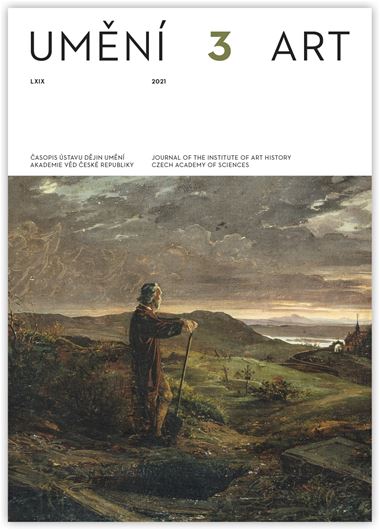Filip Srovnal
The Wall Paintings of the Legend of St Eligius in the Nuremberg Chapel of St Moritz
The Nuremberg Chapel of St Moritz was destroyed at the end of the Second World War together with its remarkable set of medieval wall paintings. Among these, what is known as the Wenceslas fresco (Wenzelsfresko) has resonated the most in the scholarly literature. This cycle of paintings, of which only the first four scenes survived into the pre-war period, was believed to show episodes from the childhood of the son of the emperor Charles IV and later king, Wenceslas IV, who was born in Nuremberg and christened there. The painting thus became one of the proofs of the theory of art as a tool of dynastic power. Comparison of this wall painting with the iconographic and hagiographical sources has shown, however, that it was not about the life of Prince Wenceslas but depicted the legend of St Eligius. No direct literary source for the painting has been identified, but whoever conceived the painting cycle very probably drew on the hagiographical texts that were used around the year 1400 in the Nuremberg Dominican monastery by the author of the treatise Der Heiligen Leben for his own version of the legend of Eligius. The new iconographic identification corresponds to the arrangement of the sacral space of the Chapel of St Moritz. The Eligius cycle was painted on the wall directly above the side altar dedicated to St Eligius as well as St Catherine, St Wenceslas and St Sebald. This was a cemetery chapel, and the commissioner of the painting was probably someone from the patrician elite. Possibilities include the patrons of the chapel, the Mendel family, or Ruff Seyboth von Wendelstein, who in 1360 established an endowment for the celebration of mass at the altar of St Eligius. The painting has great significance for the iconography of Eligius. The first scene of the cycle is the oldest known example of a depiction of the vision of Eligius’s pregnant mother. At the same time it is important evidence of the hitherto rather overlooked cult of St Eligius in Nuremberg (in 1379 the dedication of the main altar of the Church of St Sebald was extended to include St Eligius).
Filip Srovnal: srovnal.filip@npu.cz
Full-text in the Digital Library of the Czech Academy of Sciences:
https://kramerius.lib.cas.cz/uuid/uuid:ceeb2036-6dce-4e3a-807e-ffd8bc558e5e
< back

